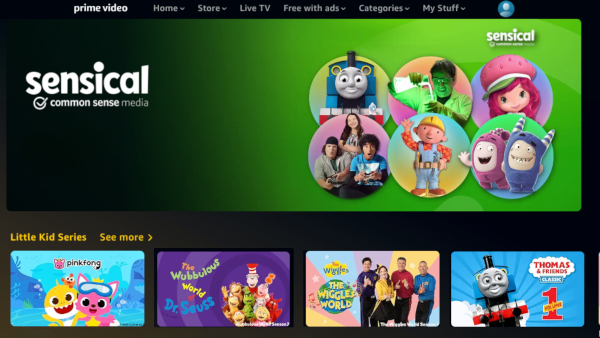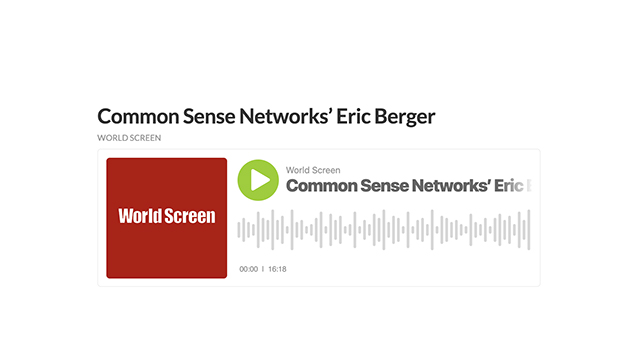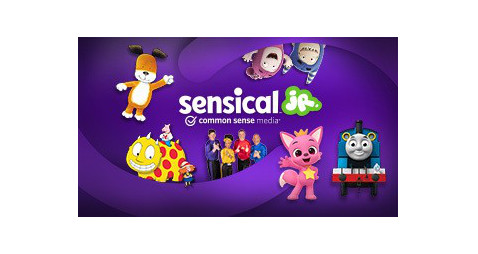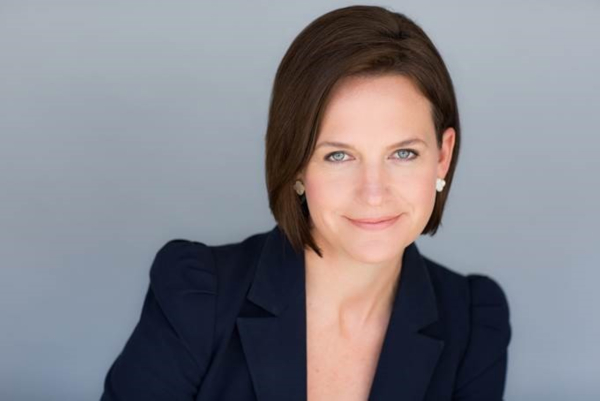Common Sense Networks CEO and co-founder Eric Berger showcased how the company serves kids and families across Sensical-branded assets, including three FAST channels, at the FAST Festival.
In the last session of Wednesday’s agenda at the FAST Festival, Berger spoke with World Screen’s Kristin Brzoznowski about where digital channels fit into the company’s overall multiplatform rubric for delivering high-quality content for kids. You can watch the session here.
Common Sense Networks has been building out its offerings since its launch in 2020, including the rollout of the AVOD service Sensical in 2021. “It came out as this critically acclaimed AVOD service to provide kids and families with engaging video experiences that are algorithm-free, so kids can explore freely in a safe environment. We moved from our O&O apps into the FAST space. As we partner with leading platforms like TikTok and YouTube to help them elevate the quality of children’s digital media, we see a way to bring world-class content vetting and curation to the FAST space. FAST is increasing tremendously, but the kids’ sector is lagging in terms of monetization. Brands are concerned about trust, privacy issues and a lack of standards. We do believe that we offer solutions that work not only for kids and families but also for the brands and the platforms. This is true on FAST channels as well as across other media.”
Berger noted that Common Sense’s offerings fill a significant gap in the kids’ landscape. “The FAST sector is narrow when it comes to the kids’ space,” Berger explained. “It’s missing the bridge age—kids 6 to tween. Most of the content that you’ll see in the kids’ space—there are about 75 FAST channels out there—is focused on preschool animation. We’re missing out on a lot of the content that the young kids love, the ones above preschool. Shows from digital-first creators that focus on a wide range of topics of interest—DIY, cooking, sports, video games, STEM, etc. It’s very difficult to find digital-first content that is appropriate, and it takes a lot of trial and error. We anchor in thematic programming for our FAST channels. You’ve seen this in the adult space with anime, food, British dramas, travel, horror channels, but you don’t see it in the kids’ space and certainly in this bridge age.”
The team at Common Sense Networks has spent the last few years identifying “well-produced, safe, digital-first content that’s widely appealing to kids and families” to curate three thematic channels: Sensical Jr., Sensical Gaming and Sensical Makers.
On the approach to curation, Berger said: “On the source side, it’s really about understanding the audience deeply. We’re following trends, and we work with and across the major creator platforms to understand the content habits of these kids. We look at thousands of series where content is trending on these platforms and find content that is ‘good TV’ for FAST. There’s a lot of content that works well on-demand. The secret sauce is the vetting side. We’re the only ones that have child development experts watch every frame of every video, and we score it using our standard. Vigilance is our filter, and consistency is our goal. We create an inordinate amount of metadata that helps us with the programming, the content classification and the advertising. This is done through this proprietary age-appropriate content standard based on 20 years of child development research at Common Sense Media. We’ve adapted it for short-form and digital-first content. The hundreds of criteria that we look at for every video are against age segmentation, topics of interest, traditional learning, personal characteristics, role models, teamwork and empathy, and then we’ve got 13 different DEI themes that we look at. So it’s a very rigorous vetting process.”
Berger then discussed how Common Sense Networks works with creators, highlighting the SENSICALSELECT program. “You could think of it as the Good Housekeeping seal, where we certify a select group of creators. Today, it’s about 500 different series out of tens of thousands that we’ve looked at. The creators like it because they can use the badge for marketing purposes. And we use the SENSICALSELECT offering with brands as the safest collection of content for kids. We’re bringing that program to FAST channels and to platforms to address the monetization issue. We’ll be certifying a number of channels, bringing them into our SENSICALSELECT network, and that gives brands the opportunity and the comfort of associating with certified content that’s not only brand-safe but also contextually aligned to their campaign. We can use that same data to slot them in based on what they’re trying to achieve with their media plan.”
The conversation then moved to how viewing patterns differ across FAST and on-demand for kids and families. He explained that in the early stages of FAST channel creation at Common Sense, “our first wave was based on age demos, which is how we do a lot of our on-demand programming. We gave them a variety of content for 2- to 4-year-olds, 5- to 7-year-olds, 8- to 10-year-olds. But we saw a drop off when the themes shifted. We learned that tight themes around a single promise work best. If it’s not a single IP, you want to be narrow and consistent. TV networks spend a lot of time on dayparts, but with dayparts, sometimes you get different content and potentially different audiences at different parts of the day. We’re focusing on day patterns. We need to figure out how these kids of different ages watch FAST. We then refine the programming across each half hour to improve the engagement and the flow from one show to the next, decreasing channel changing, decreasing churn. We’re refining and improving each week. We want to peak the peak, so we want to find the peaks of when they’re coming according to their natural pattern, but we want to be taking share and building on top of the peaks. The consistency of the channel and being tight to that promise is important.”
Co-viewing is also important, Berger continued. “On-demand connected TV is lean-back in general, but FAST is that plus even more co-viewing. You are bringing in the whole family, so the programming needs to fulfill that promise. The FAST channels are helping with discovery in that kids and families find the content they love, but it’s in this safe environment that they all can enjoy. The thematic channels deliver on this programming promise that lets kids go down the rabbit hole and removes that burden of choice, which can happen on these larger platforms.”
Berger expects continued “explosive growth” in FAST in the U.S. and further global expansion. “It will fundamentally replace traditional free TV and be an important piece of a cross-platform flywheel for content owners and brands. It is emerging as a bit of a Trojan horse in this battle for the TV operating systems in the living room. FAST is an important ingredient in this landscape and will fuel some of that growth. With that, ad dollars will triple to about $12 billion in the next five years as it offers the benefits of television in the living room and more sophisticated advertising and ad tech.”
As for Common Sense Networks’ role to play in this landscape, Berger said: “Our role is to meet kids where they are, particularly for that bridge age between preschool and tweens, with creator-driven and topic-driven content that they love in a living room setting that works well for co-viewing. Core to our DNA is being safe and creating a generation of kids who will ultimately emerge more curious, have higher self-esteem and be less materialistic because they can freely explore and be exposed to content with people who look like themselves. They won’t be subject to this over-commercialization that you see in a lot of content for their age. We do that by vetting content that’s appropriate. We make it viable for creators and platforms by improving the monetization. And ultimately, we believe that brand-safe content, using our cross-platform SENSICALSELECT network and our unmatched content metadata, will allow us to do contextual content matching and give us a chance to make this kids and family programming a viable business for all stakeholders.”
 TVKIDS
TVKIDS




